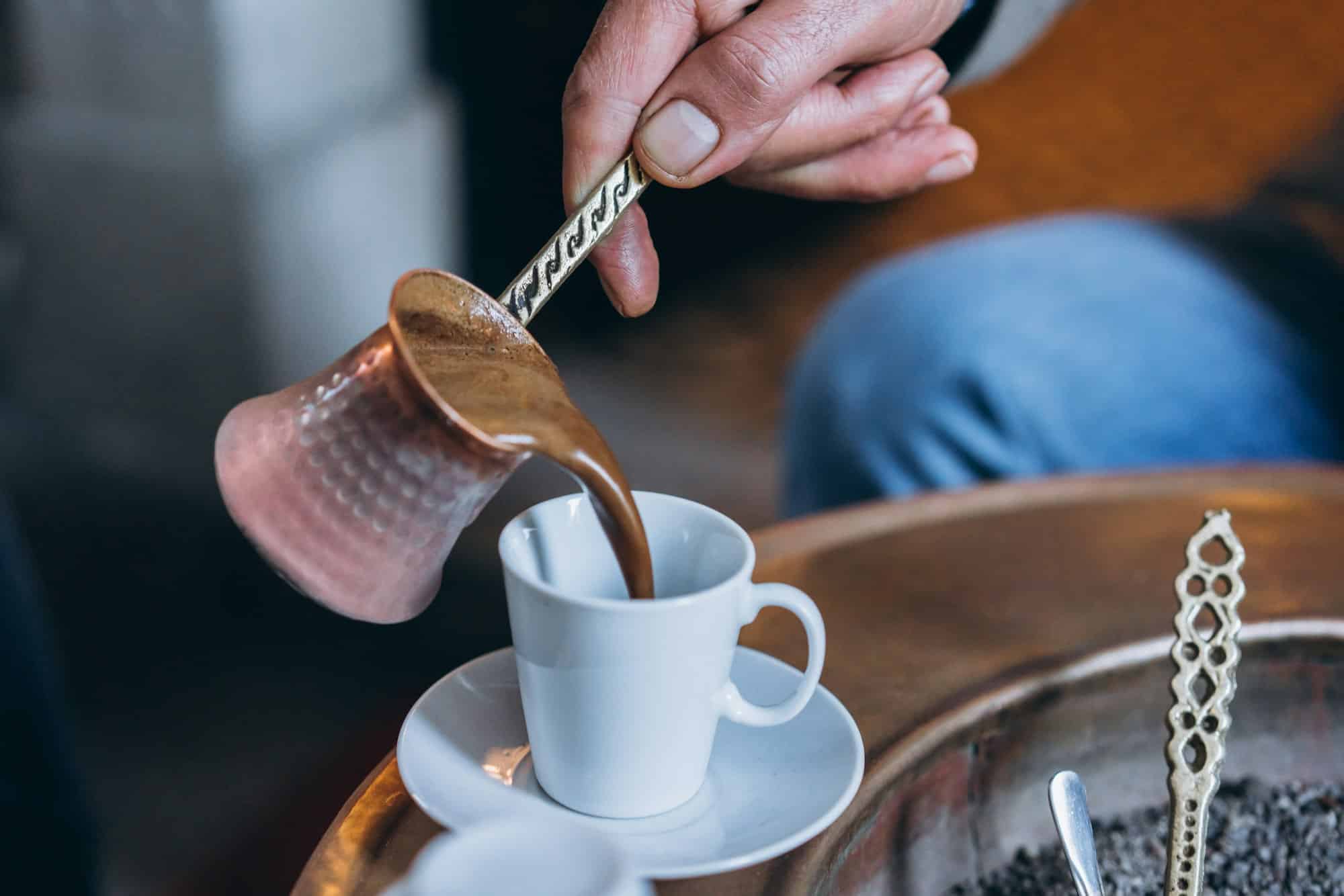Turkish coffee, known for its strong flavor and unique preparation method, has a rich cultural heritage dating back hundreds of years. Its characteristically thick foam and sweet aroma make it a distinctive beverage cherished by coffee lovers worldwide. It’s not just a drink, but an experience, a tradition, a ritual. It’s the hospitality of the Turkish people, brewed in a small pot, served in a delicate cup and designed for leisurely enjoyment. Yet, how can you bring this traditional experience into your home? Here, we will help you master the art of making authentic Turkish coffee at home, with all its subtleties and nuances.
Select the Right Coffee and Equipment
The starting point in creating an authentic Turkish coffee at home is choosing the correct coffee and equipment. Whether it’s your first time brewing or a seasoned veteran, you need to familiarize yourself with the tools and ingredients that set Turkish coffee apart from others.
In parallel : Can You Make a Gourmet Gravlax with a Dill and Mustard Sauce at Home?
When it comes to coffee, a finely ground coffee is crucial. Turkish coffee is renowned for its powder-like texture, which is much finer than the grinds used for espresso or filter coffee. It’s best to source a special Turkish coffee blend, which is typically a mix of Arabica beans with a small amount of Cardamom, a spice that adds a unique aroma and flavor.
The equipment is just as important. The traditional pot used for brewing Turkish coffee is called a ‘cezve’ or ‘ibrik.’ It’s a small pot with a long handle, traditionally made of copper or brass. The cezve’s unique shape, wide bottom, and narrow top, is designed to help create the perfect foam that Turkish coffee is known for.
Have you seen this : How to Infuse Earl Grey Flavor into French Madeleines for a Unique Tea Treat?
The Brewing Process
The process of brewing Turkish coffee is a delicate ritual that requires attention and patience. It is not just about combining coffee, water, and sugar; it is a careful balance of timings, heat and process that, when achieved, results in an elixir that delights the senses.
To start, measure the amount of cold water you will need using the coffee cup you will be serving in. Pour this water into your cezve. Most recipes recommend one cup of water per serving. Next, add sugar to taste. Turkish coffee ranges from unsweetened to very sweet, so adjust the quantity to your personal preference.
Next, add the coffee grounds. A standard recipe suggests one heaped teaspoon of ground coffee per serving, but adjust to taste. Do not stir yet. Place the cezve on low heat and wait for the coffee to start sinking into the water and for the sugar to start dissolving.
Once the coffee grounds are fully wet and the sugar has started to dissolve, stir everything until well combined. Then comes the crucial part – watching for the foam. As the water heats, a dark foam will start to build up. Just before it begins to bubble and boil, you need to remove the pot from the heat.
Pouring and Serving
Pouring and serving Turkish coffee is an art in itself. The goal is to distribute the foam evenly among all the cups. A proper Turkish coffee has a thick layer of foam on top, which is why the pouring process is so critical.
Once the coffee is ready, use a spoon to gently scoop up the foam and divide it among the cups. After that, pour the coffee slowly into the cups, taking care not to disturb the foam. The coffee should be served with the remaining sludge in the cezve – it’s part of the authentic experience.
Traditionally, Turkish coffee is served with a glass of water. The water is used to cleanse the palate before drinking the coffee, allowing you to fully appreciate its rich, complex flavors.
Common Mistakes to Avoid
While making Turkish coffee may seem straightforward, there are common mistakes that can prevent you from achieving the perfect brew. Overheating, for instance, can result in burnt coffee. Turkish coffee should never boil. The key to its unique taste is brewing it slowly on low heat.
Another common mistake is stirring the coffee after it has begun to heat. Stirring should be done before the coffee is placed on the heat, and never afterwards. Stirring during the brewing process can cause the coffee to become muddy and can disrupt the formation of foam.
Lastly, the sugar should be added before brewing, not after. The sugar needs time to dissolve and combine with the coffee and water, enhancing the flavor of the final brew.
The Tradition and the Experience
Beyond the brewing process, making Turkish coffee is about the experience and tradition. Forget about rushing. Take your time and enjoy the process. Embrace the ritual, the slowing down, the anticipation. Enjoy the aroma filling up your kitchen. Savor the moment when you pour the coffee into your cup, watch the foam settle, and take your first sip. That is the true essence of Turkish coffee – a moment of peace, a break from the hustle and bustle of daily life, an appreciation of a rich cultural tradition. After all, as the Turkish proverb goes, "Coffee should be black as hell, strong as death, and sweet as love."
So, are you ready to brew an authentic Turkish coffee at home? With the right beans, equipment, and a bit of patience, you can recreate this timeless beverage and experience its magical allure right in your own kitchen.
Ways to Enhance Your Turkish Coffee Experience
Having the right ingredients and equipment and following the correct brewing process is vital in making a good Turkish coffee. However, there are additional elements that can enhance your experience and bring an added layer of authenticity to your Turkish coffee routine.
To start, having the right setting or ambiance can greatly affect the enjoyment of your coffee. Turkish coffee is traditionally enjoyed in a relaxed and leisurely setting. If possible, create a relaxing space in your home where you can savor your coffee without distractions. This could be a cozy corner with low lighting, a comfortable couch, and some Turkish music in the background to set the mood.
What you pair your Turkish coffee with can also make a big difference. A traditional Turkish delight or a piece of dark chocolate can complement the strong and robust flavors of the coffee. Turkish delight, with its sweet, chewy texture and fragrant flavors, provides a nice counterbalance to the intense taste of the coffee.
Traditionally, Turkish coffee is also served with a small glass of water. The water is not just for quenching your thirst but also for cleansing your palate between sips. This enables you to fully appreciate the complex flavors of the coffee.
Finally, remember that Turkish coffee is meant to be sipped slowly. Take your time to taste the coffee, feel its texture on your palate, and appreciate its rich aroma. This is not a beverage to be rushed but savored, like a fine wine.
Conclusion
In conclusion, brewing a traditional Turkish coffee at home is a rewarding experience that combines the love for coffee with centuries-old traditions. It requires not just the right coffee grounds and equipment, but an understanding and appreciation of the process and the cultural context behind it. The perfect Turkish coffee is a delicate balance of flavor, texture, and aroma, achieved through a carefully monitored brewing process.
However, beyond the technical aspects, the true essence of Turkish coffee lies in the experience of drinking it. It’s about taking a moment to slow down, appreciate the simple things, and enjoy a rich, soul-warming brew. It’s a ritual, a tradition, a moment of peace amid the hustle and bustle of life.
So, whether you’re a seasoned coffee connoisseur or a novice looking to explore new coffee cultures, we hope this guide helps you navigate the wonderful world of Turkish coffee. Remember, as with any skill, practice makes perfect. So, don’t be disheartened if your first few attempts don’t turn out as expected. Keep practicing, tweaking, and most importantly, enjoying the process of brewing an authentic Turkish coffee at home.











